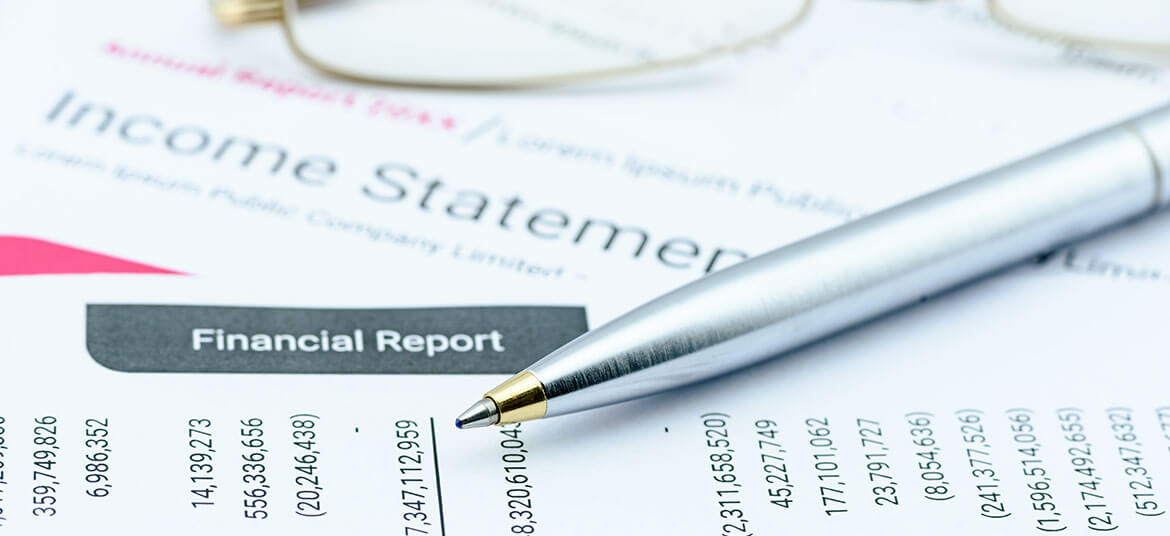The three most crucial statements that businesses use to check their financial performance are the income statement, cash flow statement, and balance sheet. Learn what an income statement (also known as a profit and loss statement (P&L)) is and what it can tell you about the financial health of a business.
Income Statement or Profit and Loss Statement (P&L)
In a nutshell, a profit and loss statement (P&L) is an important financial document that summarises the income and expenses of a business during a stipulated period. Usually, publicly traded companies issue this statement for every quarter of a financial year. For SMEs, creating an income statement each month or each quarter will show how you are doing.
The information in this statement shows whether a company can or cannot make profits by reducing costs, increasing revenue or doing both. A few other names for this financial report are Statement of Operations, Earnings Statement, Expense Statement, Income Statement, and Profit and Loss Statement.
Understanding the need for Profit and Loss Statement (P&L)
Public companies issue this statement along with the balance sheet and cash flow statement every quarter and annually. It’s one of the most common financial statements found in business plans. By looking at the income statement, you can quickly see how well your business has been operating and if you are heading towards profits or losses.
Similar to the cash flow statement, the income statement shows if there are significant changes in the condition of a business over a stipulated period. In contrast, a balance sheet is a snapshot showing what a business owns and owes at a given point of time.
It’s helpful to compare the cash flow statement with the income statement because when a company uses the accrual method in accounting, they log both expenses and revenues before cash is spent or received.
An income statement follows a general form. You start with an entry covering revenue, also known as the top line. Then you deduct all expenses incurred in running a business, such as tax expense or income taxes, operating expenses, interest expenses and total costs of goods sold (COGS).
Once you subtract all these expenses, you get net income, also known as the bottom line. These items are also referred to as profit and earnings. Many templates with line items for P&L statements are easily accessible online for free. Here’s one from www.business.gov.au.
Gross and net profits
Gross profit is included in the income statement. This is the amount the company makes without deducting operating expenses, income taxes and interest payments. Sometimes it’s called the gross margin. Net profit, on the other hand, is the total profit the company makes after deducting all these expenses. This is also called net earnings or net income. An operating profit is a profit a company makes after subtracting operating expenses.
Revenues and gains on a profit and loss statement
It’s crucial to understand the concept of revenues and gains in the income statement.
Revenues and expenses form most of this financial statement. Revenue that comes from the primary activities of a business is known as operating revenue. If we look at a manufacturing company, for example, there are only two primary activities – one is to purchase merchandise, and the second one is to sell it. But, in contrast, for companies that provide services, primary activities include things such as hiring experts and selling services to clients.
But for retailers, wholesalers, and the distributors, revenue received from the primary business activities is called sales or sales revenue. It’s common for people to use the word income instead of revenue in this document. It’s also essential to not get confused with receipts and revenue, as they are two different things.
Companies can also earn revenue from secondary activities, which is known as non-operating revenues. For example, a company can make money by renting out their vacant property or receiving interest from idle cash in their bank account. Since the company did not generate this income by purchasing or selling merchandise, these amounts are listed separately from the primary service activities or sales revenues in the statement.
Gains, on the other hand, are the profit that the business makes from selling its long-term assets or winning a lawsuit, for example. A company receives these funds outside of their regular activities.
Compare the Income Statement with past reports
It’s helpful to compare income statements from previous accounting periods to understand various aspects such as operating costs, changes in revenue, the amount the business spent on research and development, and net earnings over the period. These numbers are significant as they show how your company is doing. For example, if you notice steep growth in revenue, be aware that expenses will grow accordingly.
The benefits of using an Income Statement (Profit and Loss Statement)
As the income statement shows a company’s performance and profitability, it enables you to understand financial performance. For example, if a company has low profit, the bottom line of the profit and loss statement shows a net loss. Using this information, a banker, creditor or a lender may not provide finance.
But, in contrast, if a company is performing well, the bottom line of the P&L statement will show net income. This shows that the company is using funds that they borrowed effectively by investing wisely. Creditors, lenders, investors are more likely to lend to profitable businesses. For SMEs, an income statement (P&L) shows you how well the businesses in performing and enables you to compare results between time periods, such as quarters and years.
To learn more about other financial statements, see What Is a Balance Sheet? and What Is a Cash Flow Statement?




